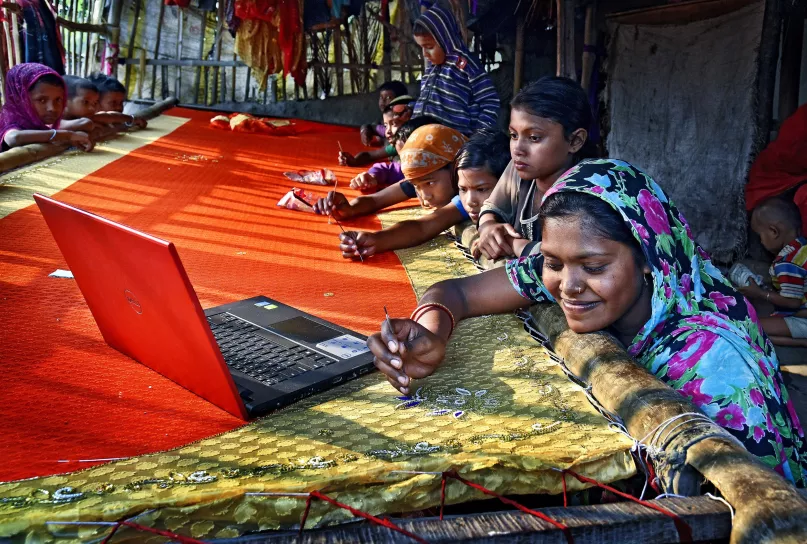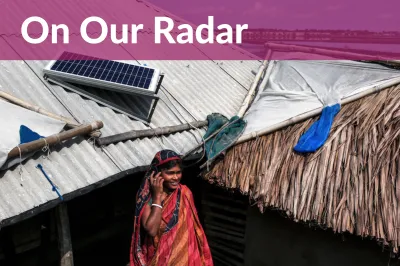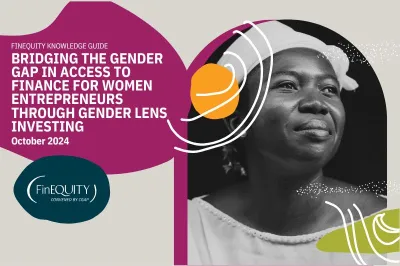How Social Media and E-commerce Will Improve Women’s Financial Inclusion

Women entrepreneurs are engaging with WhatsApp, Facebook, Amazon, Alibaba, and other platforms as their businesses leverage digital channels of engagement. As we seek to better understand what these platforms mean for women, however, there are still many unanswered questions. New women-owned businesses are rapidly entering the digital world. Therefore, it is important to understand how this community of FinEquity researchers and practitioners can direct their efforts for maximum effect.
Earlier this summer, CGAP and Women’s World Banking gathered with Facebook Financial and Caribou Digital as part of Women’s World Banking’s Making Finance Work for Women discussion series to start examining this issue. Our conversation surfaced crucial questions which form a research agenda, of sorts, designed to help guide the global conversation going forward.
-
What are our key terms?
In broad strokes, there are three types of digital business-to-customer business models. First, there is formal e-commerce. This term includes platforms that offer an array of integrated functionalities that businesses plug into to sell goods and services directly to customers. Some examples include Amazon, Alibaba, or Jumia. Second is what CGAP has coined “informal online commerce” in which largely informal businesses and microentrepreneurs sell goods solely over social and communication platforms, such as Facebook and WhatsApp. Typically, under this model, sellers connect with buyers on these applications but conduct payments, delivery, and after-sales service off the platforms. Third, are the wide swathe of hybrid models in between the first two. Women’s World Banking exploration of “social commerce entrepreneurship” encapsulates informal online commerce but includes other ways of leveraging social media for commerce whereby women blend social media with e-commerce and payment and delivery platforms.
We cannot have meaningful conversations about gender balance, challenges, needs, and impact without specifying which approaches and platforms we are using. The first step is for the research and practitioner community to clearly define terminology.
-
How are women entrepreneurs using digital platforms for their businesses?
Entrepreneurship paths are shaped by gendered digital and commercial experiences as well as by digital financial capabilities. These constraints can limit women’s use of digital platforms. For women engaging on formal e-commerce platforms, there are prescribed ways of advertising, communicating with customers, agreeing on a sale, and making a payment. Variations might include regulation about whether businesses must be formalized to use the platform, norms surrounding bank account access, and additional factors in the ecosystem. For women entrepreneurs who are using social media to engage with customers and drive sales, the spectrum of digital platforms used (and therefore financial inclusion opportunities) varies widely. Accordingly, there is much space for additional research to track evolution over time. Recent Women’s World Banking research in Mexico revealed that in part because of Covid-19, women were switching to social media on their smartphones for marketing, customer communication, and price negotiation. Most of the sample, however, switched to cash or inefficient bank-led transactions rather than using available e-money or app-based finance. IFC’s research in Southeast Asia and Africa found that women engaged on formal e-commerce platforms are somewhat more likely than men to leverage social media for marketing, and that they are more likely to join formal platforms to grow existing businesses. While other stakeholders are increasingly looking at this topic, few studies prioritize the customer perspective rather than the market opportunity. More work is needed to better articulate how women use, or would prefer to use, digital platforms.
-
What is the path forward for integrating digital financial services (DFS) into e-commerce and social media platforms?
In emerging markets, it is still unclear what the path forward might be for DFS integration. At a recent Making Finance Work for Women event, Facebook Financial's Yana Dumaresq shared that there is a need for every kind of player at the table—financial services providers and digital platforms alike—to co-create a digital financial future for women entrepreneurs. What partnerships or integrations might look like, however, is yet to be determined, and contextually dependent on the regulatory environment, dominant platforms, services and market size. Qualitative data collected by Women’s World Banking from women customers indicate that they would respond well to services which are integrated into familiar digital engagement platforms. This means that an accepting environment for both the supplier and customer must be in place. A positive user experience—with payment confirmation and tangible record keeping— is also important. Financial services providers can solve each of these problems, but it remains unclear how they might go about doing so, and where the financial institution stops, and the digital platform begins.
Whether digital financial services become integrated or not, social media platforms could serve as a valuable information source on DFS for entrepreneurs and customers. They could potentially host training content and inform audiences on a wide range of topics including what DFS services are available, how to use them for online commerce, and protection from fraud.
As we have seen in the larger bank and fintech partnership ecosystem, there are many ways in which digital platforms and financial institutions might work together. In this case, the digital platform is the primary driver of the customer relationship, and therefore might be more likely to set the terms with the financial institutions. It remains to be seen whether there is a future in which FSPs, and digital platforms work together, or whether FSPs will provide the back-end mechanisms for a digital platform’s retail payments interface. More analysis is needed to understand how partnerships can best serve women entrepreneurs with a range of quality services delivered with consumer protection in mind, within which women can choose what best suits their needs. Nevertheless, we are seeing actors in this space moving in the right direction.
Next steps – how can you make a difference?
To move these issues forward we welcome insights from the FinEquity community on the contours of women’s digital entrepreneurship. For practitioners, we encourage engaging with action in this space. We look forward to continuing to explore this topic within and beyond FinEquity on the Discussion Group Platform.



The post is a positive correlation between e-commerce experience and services that could boost financial inclusion, specifically the adoption. Closing the financial inclusion gender gap is about more than account access. It's about making sure accounts unlock real opportunities.
Leave a comment